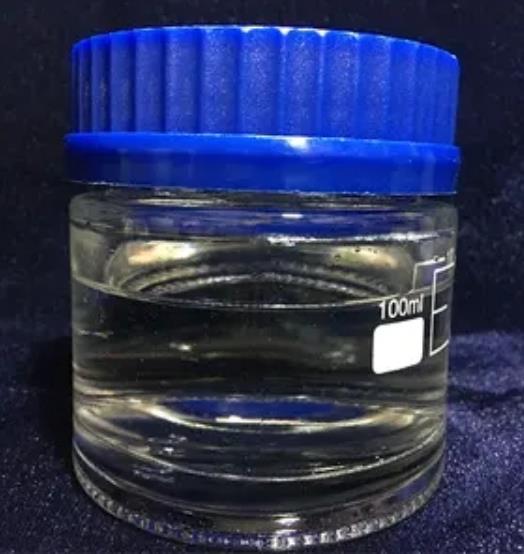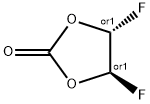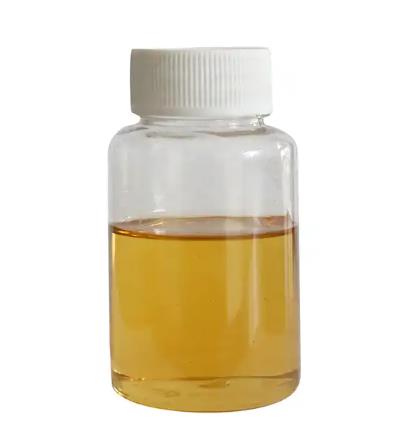Unlocking the Potential of Di-Fluoro Ethylene Carbonate in Advanced Chemical Applications and Energy Solutions
Introduction
In the dynamic realm of chemical research and industrial applications, Di-Fluoro Ethylene Carbonate emerges as a compound of notable interest due to its unique chemical structure. Serving a critical role in augmenting the performance and efficiency of a variety of chemical reactions and products, this fluorinated carbonate ester is distinguished by its stability and reactivity. Its deployment paves the way for the development of cutting-edge materials and energy storage solutions, meeting the growing demand for high-performance materials and sustainable chemical processes. The exploration and application of Di-Fluoro Ethylene Carbonate are therefore gaining momentum among scientists and industry professionals[1].

Figure 1 Characteristics of Di-Fluoro ethylene carbonate
Mechanism of Action
Di-fluoro ethylene Carbonate operates through a unique mechanism that capitalizes on its distinct molecular structure, marked by the presence of fluorine atoms. These atoms significantly modify the compound's physical and chemical properties, influencing its polarity, solubility, and reactivity with other substances. In electrochemical applications, it aids in forming a stable and conductive solid electrolyte interface (SEI) layer as an additive in lithium-ion battery electrolytes, essential for enhancing the battery's lifespan and performance. The fluorine atoms also contribute to its high thermal stability and low flammability, making it a safer choice for stringent safety applications. Its role in improving the solvation of lithium ions underscores its importance in advancing battery technology and electrochemical processes.
Applications
The versatility of Di-Fluoro Ethylene Carbonate is evident in its wide range of applications across the chemical industry, significantly impacting energy storage, particularly in lithium-ion batteries. Its contribution to electrolyte solutions results in more stable and effective SEI layers, driving the development of batteries with superior energy density, cycle life, and safety profiles. Beyond energy storage, its unique chemical properties render it invaluable in organic synthesis and pharmaceuticals, enhancing the efficiency and selectivity of complex molecule synthesis. Its environmental benefits also align with the industry's move towards greener and more sustainable chemical practices[2].
Storage Methods
The storage of Di-Fluoro Ethylene Carbonate necessitates meticulous attention to detail to uphold its chemical integrity and guarantee the safety of individuals involved in its handling and use. Given its role in various industrial and research applications, implementing rigorous storage protocols is indispensable. Below, we delve into a comprehensive set of guidelines and practices essential for the proper storage of Di-Fluoro ethylene carbonate, aiming to preserve its efficacy and minimize risk.
Environmental Conditions
Temperature Control
Store Di-Fluoro ethylene carbonate in environments where temperature conditions are consistently cool. Extreme temperature fluctuations can affect the compound's stability, leading to potential degradation or unwanted reactions. Ideally, temperatures should be maintained below room temperature, within a range that does not exceed 25°C (77°F).
Moisture Management
Di-fluoro ethylene carbonate must be kept in dry conditions to prevent hydrolysis or other moisture-induced reactions. Using dehumidifiers in storage areas or silica gel packets in storage containers can help manage moisture levels effectively.
Ventilation
Adequate ventilation is crucial to dissipate any vapors or gases that may emanate from Di-Fluoro ethylene carbonate containers, especially in the case of accidental leakage. Well-ventilated spaces reduce the concentration of potentially hazardous fumes, enhancing safety for personnel.
Container Specifications
Seal Integrity
Containers used for storing Di-Fluoro ethylene carbonate should be airtight to prevent moisture ingress and the escape of vapors. Regular inspection of container seals and gaskets is recommended to ensure they remain intact and effective.
Material Compatibility
Choose containers made from materials that are chemically compatible with Di-Fluoro ethylene carbonate to avoid reactions that could compromise container integrity. Typically, high-density polyethylene (HDPE) or Teflon (PTFE) are considered suitable materials that offer resistance to chemical attack.
Safety and Regulatory Compliance
Safety Equipment
The storage area should be equipped with appropriate safety equipment, including spill containment kits, fire extinguishers (especially for chemical fires), and personal protective equipment (PPE) for handling emergencies.
References
[1]Xing L, Zheng X, Schroeder M, et al. Deciphering the ethylene carbonate–propylene carbonate mystery in Li-ion batteries[J]. Accounts of chemical research, 2018, 51(2): 282-289.
[2]Payne R, Theodorou I E. Dielectric properties and relaxation in ethylene carbonate and propylene carbonate[J]. The Journal of Physical Chemistry, 1972, 76(20): 2892-2900.



